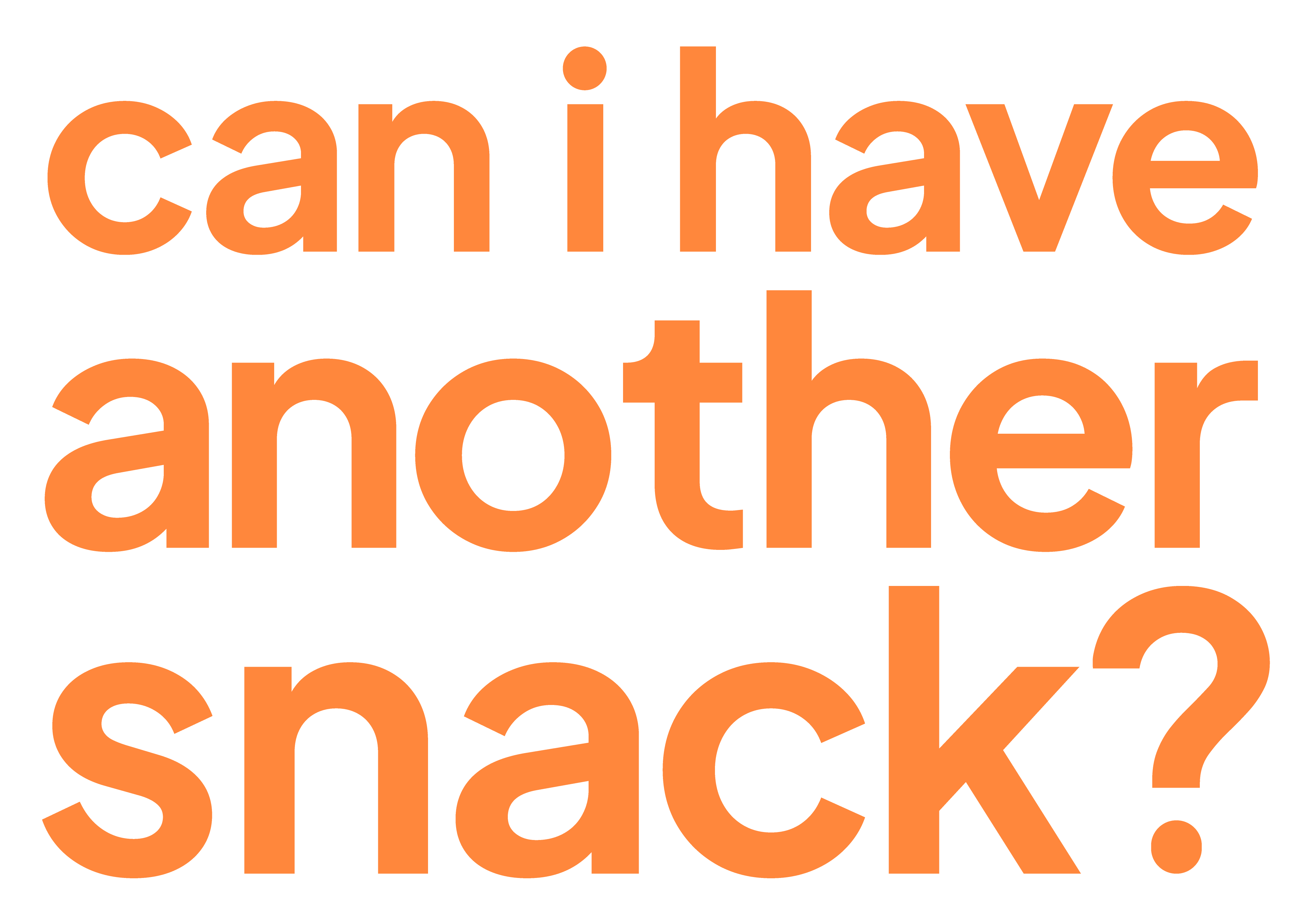Friends! Tomorrow marks five years to the day since Just Eat It was published. I thought it would be fun to walk you through the process of pitching, writing, and publishing a book. As well as share some reflections more broadly on Intuitive Eating and how my practice has shifted over the years. There is a lot to cover here so I’ve split this up into a part 1 and a part 2 which I’ll publish next week and will contain thrilling insights such as: what Prue Leith said about my book. Today I’m going to focus on the process of how I got to writing a book: finding an agent, writing the proposal, pitching to publishers, and how I wrote a first draft in - no word of a lie - four months.
For anyone who doesn’t know, I wrote Just Eat It - How to Get Your Shit Together Around Food. It was published in January 2019 on the heels of a major push-back against clean eating and pseudo-nutrition, and at a time when I think it’s fair to say that a lot of people were feeling confused about food. I wanted to share some of the tools and strategies I was using with my clients on a 1-1 basis that helped guide them towards a more peaceful relationship with food and their bodies.
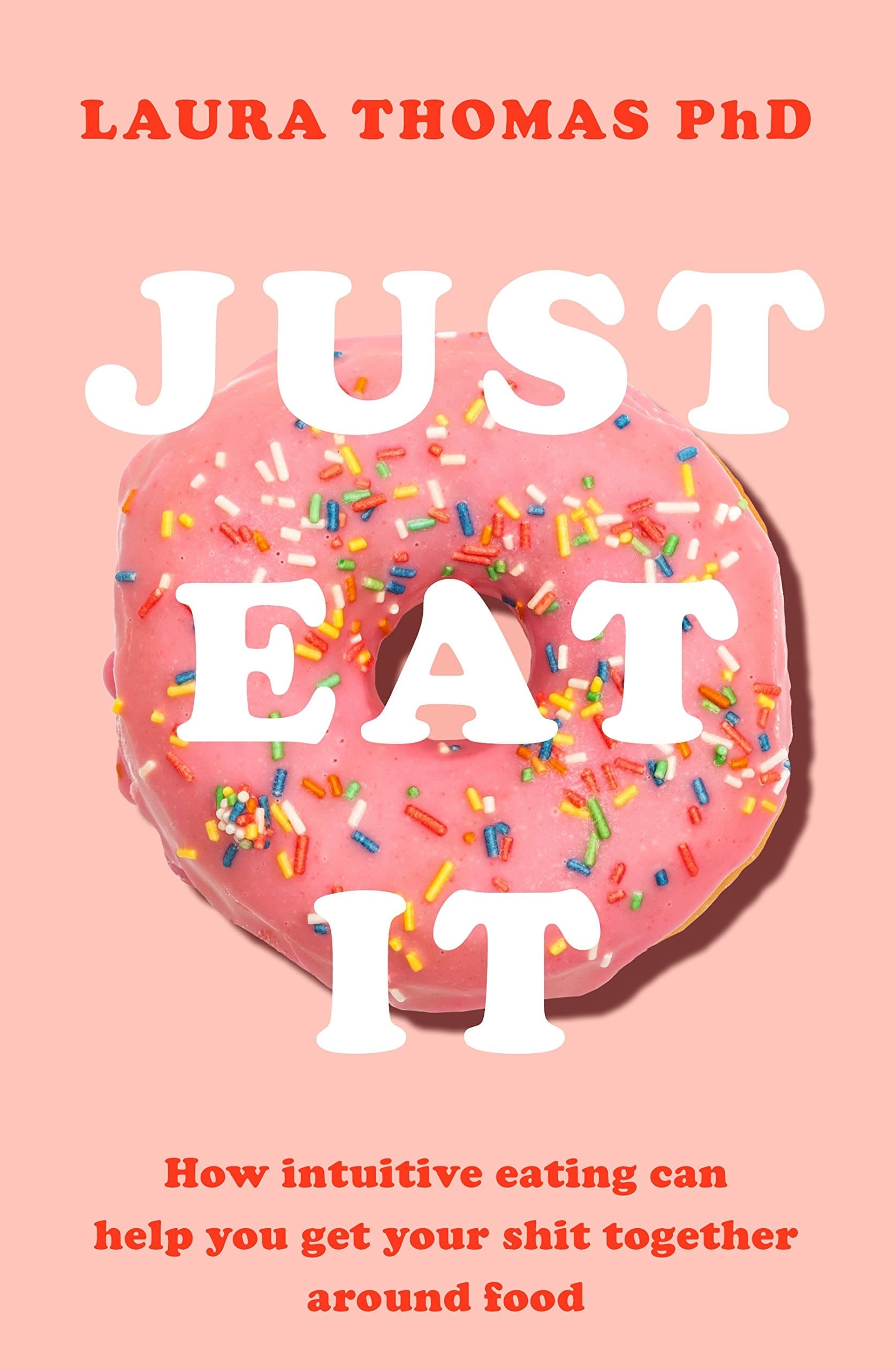
First a little timeline of events because I always find it so interesting to hear about how other people got published. I also don’t think most readers really appreciate what goes into pitching, writing, and ultimately selling a non-fiction book (the process is a bit different for fiction writing). I know of some people whereby a book deal just fell into their lap because of their social media following (or they’re nepo babies), but that is not my story. I massively underestimated just how much work it would be. I’d say that the actual writing - which in and of itself is brutal, yet also the easiest part of the process - accounts for maybe 40% of the work. It is a full-time job. You have to throw yourself into it wholly and completely; it’s not something you can half-ass. And it’s not just demanding in the sense of being graft - you will be turned inside out and emotionally wrung several times over before you even reach publication day. Still, if you asked me if I’d do it over again, I would emphatically say yes every time because HOLY SHIT MY BOOK IS IN BIG FOYLES. (P.S. If you want to ask me more about my experience of getting published - even if you just want to know what I chatted to Joe Wicks and Prue Leith about (see below) - then join me for a publishing AMA on Thursday as part of our weekly discussion threads for paying subscribers).

Finding an agent and writing a proposal
I had known I wanted to write a book for a long time. But I was only familiar with publishing academic papers - I had no idea how to get published with a major publisher. In 2017 my podcast Don’t Salt My Game had been going for a little while and was starting to gain traction. I started asking my guests about their experiences of getting published; finding a literary agent, writing a proposal, and meeting with publishers. One of my guests was gracious enough to introduce me to their literary agent and he agreed to a meeting. I was lucky that he had heard of the podcast and knew a little bit about my work. Turns out he was using my podcast to poach other potential authors, but we won’t hold that against him!
I told him about my idea; originally I had wanted to write a book that was part nutrition 101 with some practical advice about how to navigate food with the help of intuitive eating (IE). He encouraged me to lean into the IE part and we worked on refining a proposal over about six months. This part felt like it took forever and I was starting to wonder if we would actually get it in front of publishers. Once he agreed it covered everything a publisher would want to see, he sent it out to commissioning editors who he thought would be a good fit for the book.
Meeting with Publishers
I remember not hearing anything from my agent for a long time after we submitted the proposal. Apparently there was some mega book fair going on somewhere so all the editors and publishers and agents were there. I’m pretty sure there was a lot going on behind the scenes that I wasn’t aware of at this point - a lot of schmoozing and networking. But that’s what agents do I guess. Eventually we started to get a few little nibbles of interest and invitations to meet with publishers. When you get to the stage that publishers want to see you face-to-face it usually means that they have discussed the proposal with the editorial team, they all see the creative vision behind the book, and they like your writing. Then the editorial team takes your proposal to the business team. They basically try to convince the money people that the book makes good business sense and they can shift enough copies to make the book financially viable. So yeah, by the time you get invited in to meet the team, you’ve usually cleared a few hoops. At least in theory...
I’m not gonna name names but my first meeting was with one of the biggest publishers in the country? World? Galaxy? So, no biggie.
It is very much not a big deal to people who work in publishing, but for a first time, yet to be signed, wannabe author, setting foot into a publishing house is thrilling. I still get tingles thinking about seeing those books lining the foyers and the names of authors whose work I admire. I was beyond nervous-excited to talk to this publisher.
Obviously I had never been to a meeting like this before, but my agent had primed me on the above; if they’re calling you in for a meeting it means they like your book.
Except that’s not how it went down. My agent and I both walked away feeling like we had been hit by a truck. It was an inquisition. I remember a particular sticking point being that I only had 6K followers on Instagram at the time. They wanted to know who my contacts were and how I planned to network and they wanted me to write a different book. They didn’t seem to like me or my idea very much at all and it was a stark reminder that publishing is a business like any other - something everyone who loves books knows but tries to suppress. Of course you have to sell yourself as well as your book but I left that meeting feeling like I had been distilled down to my social media presence.
‘That’s not how these things usually go’ my agent told me afterwards. I was devastated and convinced I wasn’t actually ever going to publish a book.
But I had a few more meetings lined up – also at pretty big, well respected publishers, as well as some smaller ones. Those meetings felt entirely different from that first one. People were excited to meet me and tell me what they liked about the book. They wanted to tell me about their vision for the book; how they planned to sell it and get it to readers. This was more what my agent had in mind.
So I had a few of these great meetings, where people were blowing smoke up my ass about the book (no complaints here); we were feeling pretty confident that one of the publishers would pick up the book but had one final meeting to take. My agent, at that point, wasn’t sure they were the right fit, but figured it wouldn’t hurt to talk to them.
Good thing too, because out of all the publishers we spoke to, the team at Bluebird (an imprint of Pan Macmillan) were by far the most personally invested in the book. They just got it in a way the others hadn’t. They really believed in the book (you know, as well as it being a decent business prospect). They seemed galvanized by it, and had really big, really exciting plans. I remember the publisher, Carole Tonkinson (a legend in the publishing world), told me I didn’t need to speak to any other publishers because I had found my home. At the time I thought that was maybe just something people said in publishing. But turns out, she was dead fucking serious (CT doesn’t mess about, it transpires).
The book went to an auction, meaning that all the publishers I met with put in their best offer to buy the rights of the book. I didn’t really have anything to do with this part - this is the agent’s remit. But after a few days he called me to tell me that we had found a publisher for my book. It was Bluebird. My physical form dissolved; I was now a puddle on the floor. It had taken the best part of a year, but I had a book deal.
Writing the book
I got the offer in November 2017. They wanted to publish in January 2019. So, just over a year. We also needed to get the advanced copies (‘proofs’) out to press, journalists, and influencers 6 months ahead of publication. That meant having a first draft to the publisher by March… 👀
This definitely isn’t typical in publishing (as far as I know - and I had a lot longer to write book two). I had two chapters written already (from my proposal), so just another 11 to go. Looking back, I don’t know how I managed this - especially because my book is about 30, 000 words longer than it needed to be (are you surprised?). But, I wrote the first draft and handed it in (roughly) on time.
I had about a month before I got edits back from the publisher. We moved chapters around, Carole wanted some things to be more upfront (literally), and she command + F’d the word ‘shit’ and told me I needed to take out some of the swearing (looool). I also collated guest essays and contributions from other folks in the field like @michelle elman, Kimberley Wilson, and even some former clients who shared their stories.
After a few more rounds of edits - h/t to the extremely patient Martha Burley, editor extraordinaire at Blurbird who had to deal with me - we were close enough to produce proofs. A proof is essentially a print set version of a book that is pretty close to the finished product but hasn’t been through a line-by-line copy edit, so there will be typos and spelling mistakes, maybe some questionable legal stuff, and it will eventually turn up at an Oxfam on Oxford St but I digress. Bluebird wanted the proofs to make a splash, so they made three different versions with different covered colours that were a riff on what the final cover would look like.
Speaking of covers - selecting a cover came off the back of that intense 4-month writing period. I was exhausted and burnt out (no shit, right?); seeing the cover ideas for the first time gave me the momentum I needed to get through the subsequent rounds of edits. Ditto with getting the proofs and seeing them landing in people’s hands.
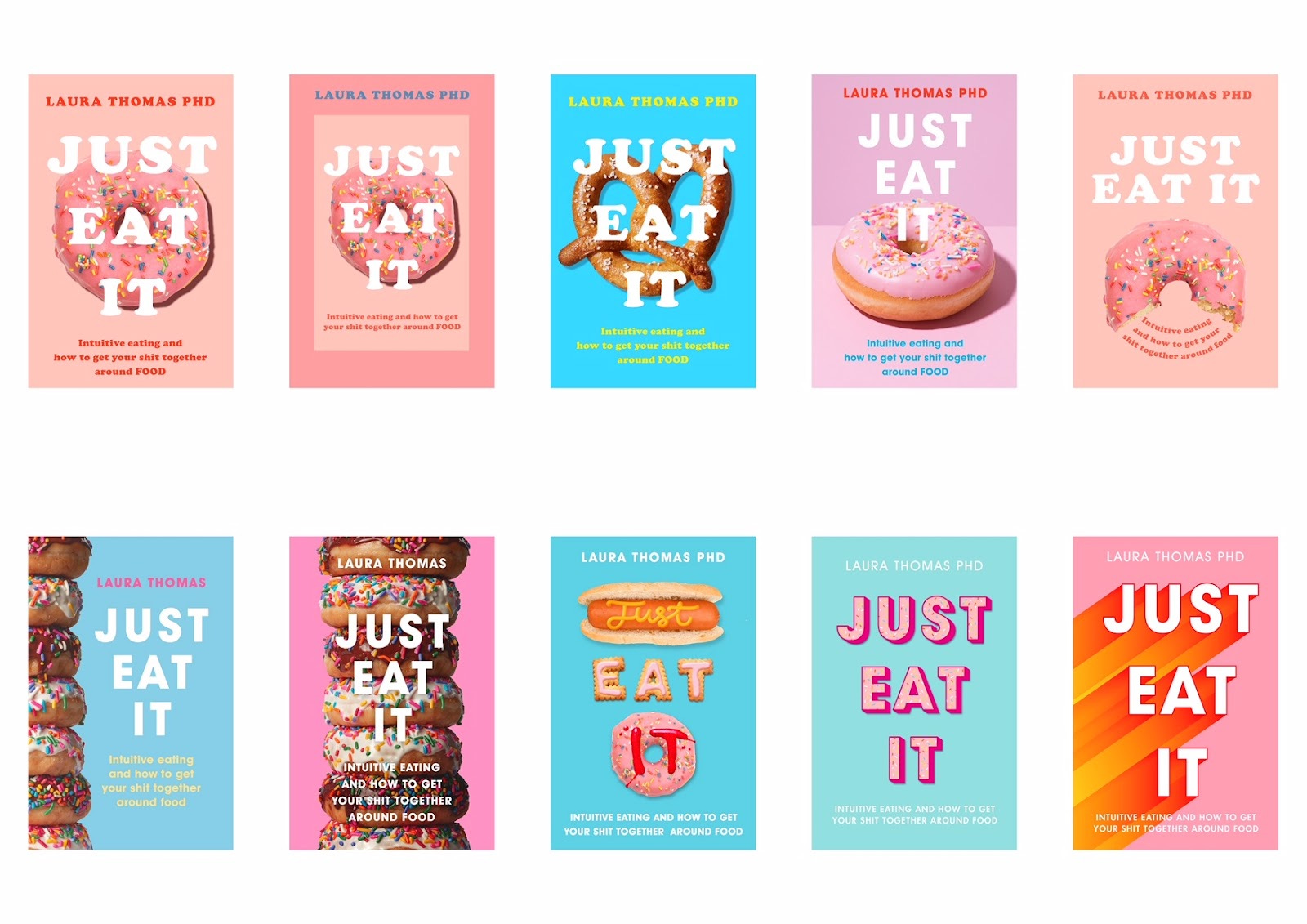
You all know how this story ends (top left), but seeing all of these cover options and imagining an actual book was totally electrifying. You can imagine there were lots of texts to friends and my now husband. And natch, everyone had a different opinion on which we should go with. Looking at these now I’m drawn to the pretzel and the one on the bottom right - how about you?
Summer 2018 was a complete blur. But somewhere in the six weeks between losing my dad, and getting married, I finished the final manuscript of the book. I remember sitting doing edits as Dave was trying to find trees (??) for the wedding venue because our original supplier had bailed (or something. Honestly he planned our entire wedding so I don’t know any of the details). There would be further rounds of edits (again, thank you Martha!) but this was the last big push (I had written entirely new chapters between the first and second drafts).
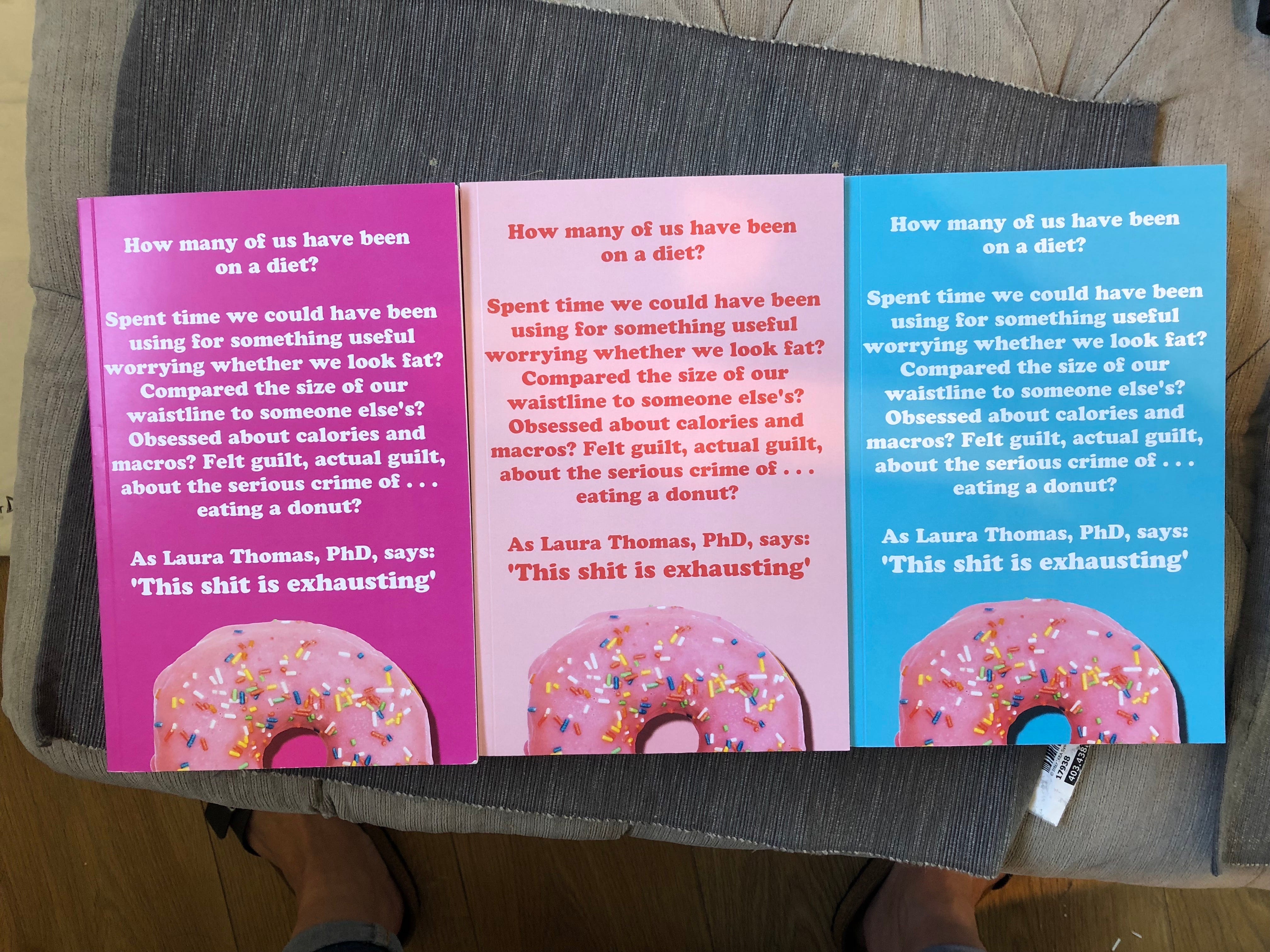
Literally the day before my wedding, the proof copies arrived. At the time I thought this was just a massive coincidence. Looking back at my emails this week, I can see that Bluebird’s (then) comms director, the inimitable Jodie Lancet-Grant – now associate publisher – may have fashioned them as a wedding present. If I hadn’t been completely emotionally destroyed before that point, holding my book in my hands for the first time tipped me over the edge.
In amongst all the chaos, I did manage to take 2 weeks off for my honeymoon, before starting a post-graduate diploma in Clinical Nutrition and Eating Disorders at UCL in October 2018, just as it was time to start marketing the book. Clearly, when I enrolled on the course, I didn’t have the faintest clue about what lay in store for the coming months.
Marketing the Book
Even before I had finished writing the book, Bluebird’s (then) Publicity Manager, Jessica Duffy, was orchestrating a campaign that would get the book noticed and into the hands of influential people. I knew that she had grand plans, but I was naive to exactly how grand they were.
The first major event I did was the Bluebird showcase - an event with booksellers and journalists (I think?) - showcasing, believe it or not, the publisher’s ‘list’ for the coming year. It was the first time I had really spoken publicly about the book. It was terrifying, not least of all because Bluebird published some heavy hitters; Jack Monroe, Prue Leith, Joe Wicks (!!). The event was hosted by Sam Baker (then of The Pool, RIP). To say I felt out of my depth is putting it lightly.
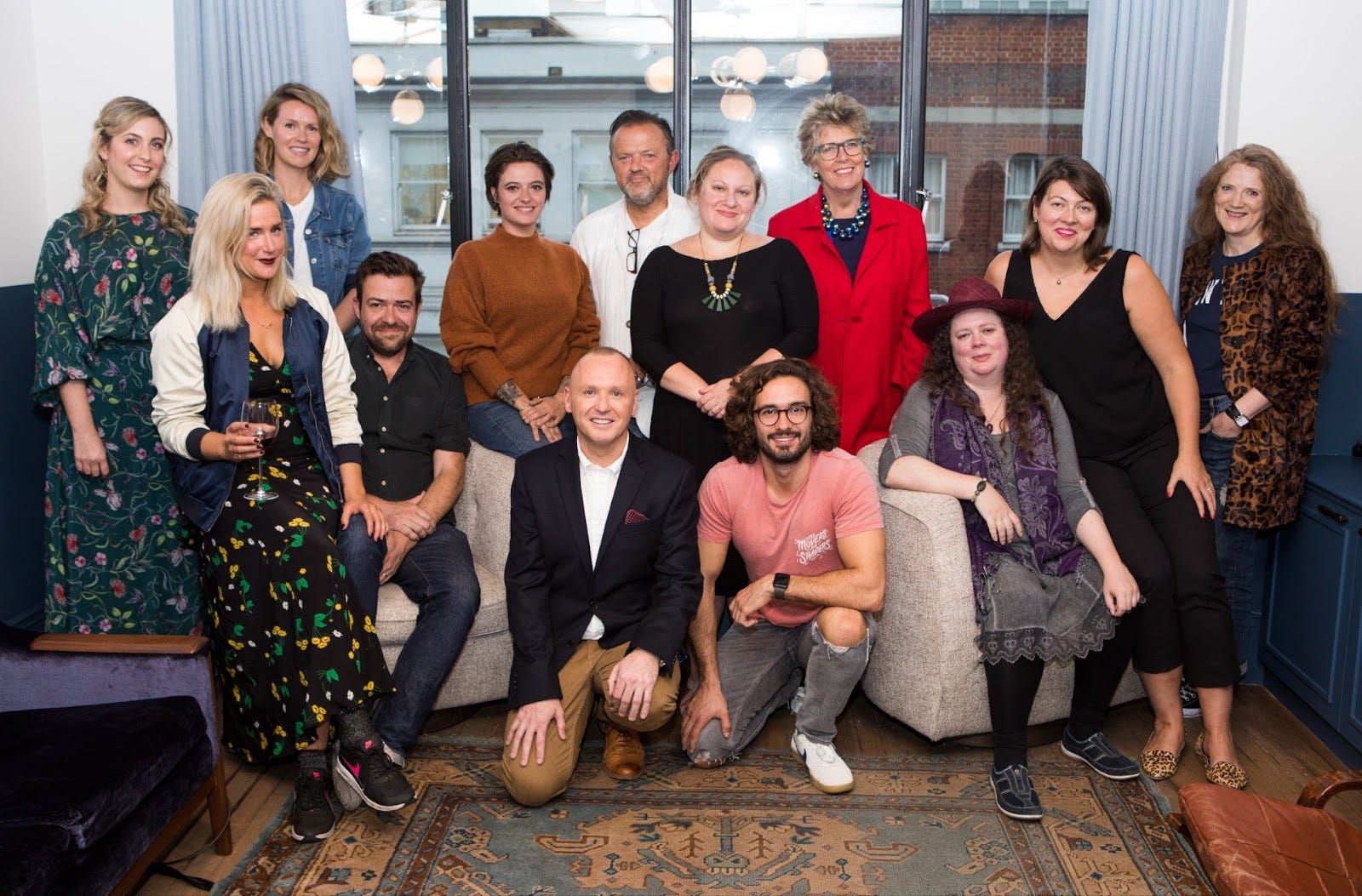
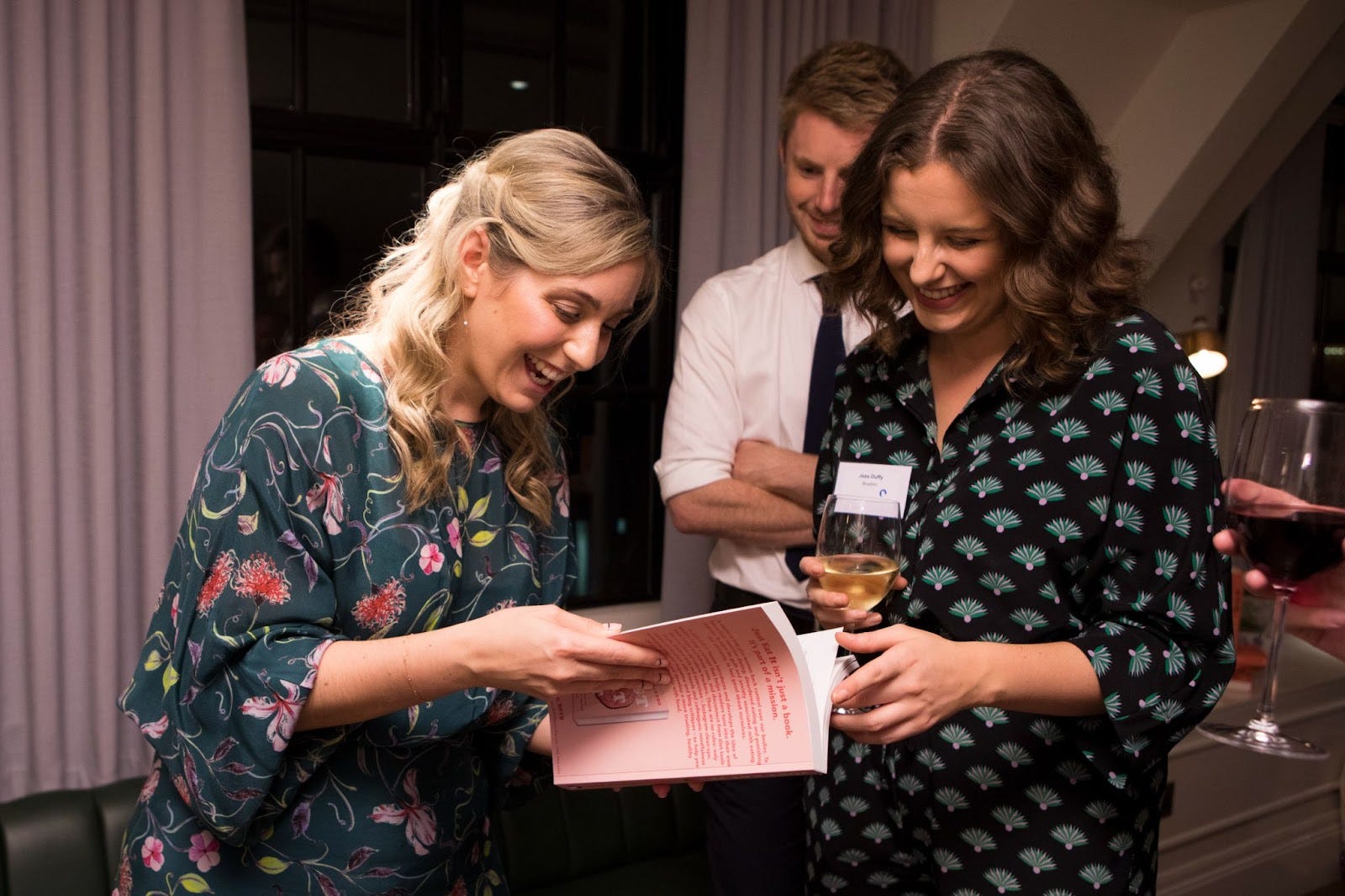
From September onwards, the publicity really started ramping up. I did an event for Red magazine with the wonderful and Stylist Live. I did interviews for The Pool (again, RIP), an interview with , Brigid Moss at Red magazine, and countless others. I wrote for Refinery 29. I spent my Christmas writing and editing this piece on the keto diet for The Guardian.
I recorded the audio book. Nothing can prepare you for reading your book out loud to a complete stranger who is also voice directing you in a dingy ass recording studio somewhere in the depths of Clerkenwell. It took around three days in total - the final audiobook has around 16 hours of audio including bonus Don’t Salt My Game episodes with Tally Rye, Sofie Hagen, Natalie Lee, and Clemmie Telford. Unsurprisingly, my throat was in tatters by the end of those few days and I was living on throat lozenges, paracetamol, and coffee. Recording an audiobook (especially one that is over 400 pages long) is hard core and do not let anyone tell you differently.
And somewhere in among all of this was the call that Dolly motherfucking Alderton was going to interview me for the Sunday Times motherfucking STYLE (Jessica Duffy is also a woman who does not fuck about). They were also going to ‘serialise’ my book, meaning they were going to print an excerpt of the book ahead of publication.
I met Dolly at the now defunct DrinkShopDo near on Caledonian Road. I barely remember what we talked about (can’t bring myself to read the actual interview), but I remember walking away from that meeting feeling exposed and vulnerable and for the first time, that shit was about to get really real. Not because Dolly had said anything to make me feel uncomfortable - she was as wonderful as you’d expect - but because this was bigger than anything I could have ever anticipated for the book. This interview was such a big deal that all the other interviews, podcast appearances, and writings were embargoed until the STYLE piece went out a few days before publication.
I had deleted Instagram over Christmas to give myself a little headspace before the inevitable onslaught. Only to receive a text the next day from a friend saying congrats on the STYLE cover story. This was news to me. My break from Instagram was short lived.
(Yes I did just scroll back through 5 years of instagram to find this link)
If you saw a woman bawling her eyes out in the little Tesco on Whitechapel Road c. 30th December 2018, it was me picking up my copy of The Sunday Times. You can read the interview with Dolly here.
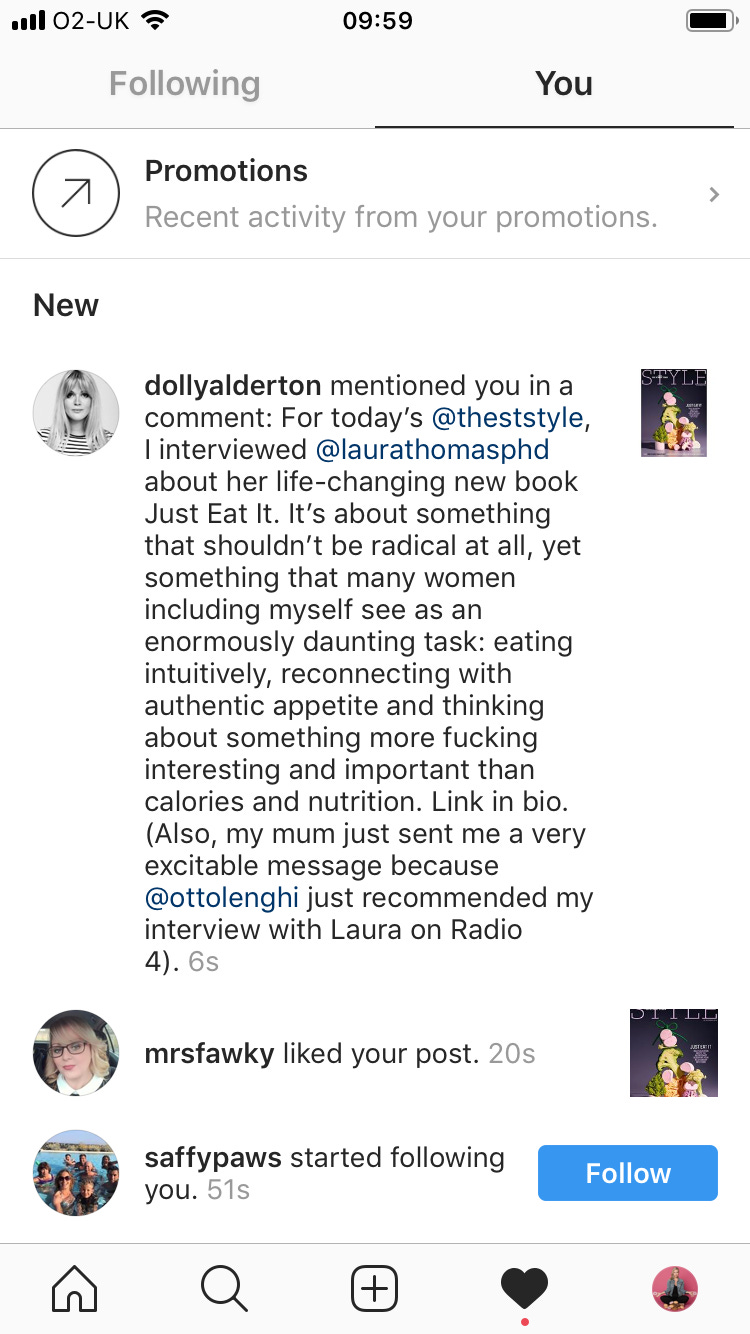
That’s where I’ll leave off for today - join me next week where I’ll share what happened on publication day and the days and weeks that followed - including what Prue Leith said about my book, how many copies were sold, and where my book reached in the charts. Plus some reflections on the anti-diet and Intuitive Eating space over the past 5 years, and how my practice has shifted over that time. And don’t forget to upgrade your subscription if you want to join in a special publishing AMA on Thursday!
ICYMI last week: The Inconvenient Truth about Sugar with Dr. Karen Throsby (Part 1)

